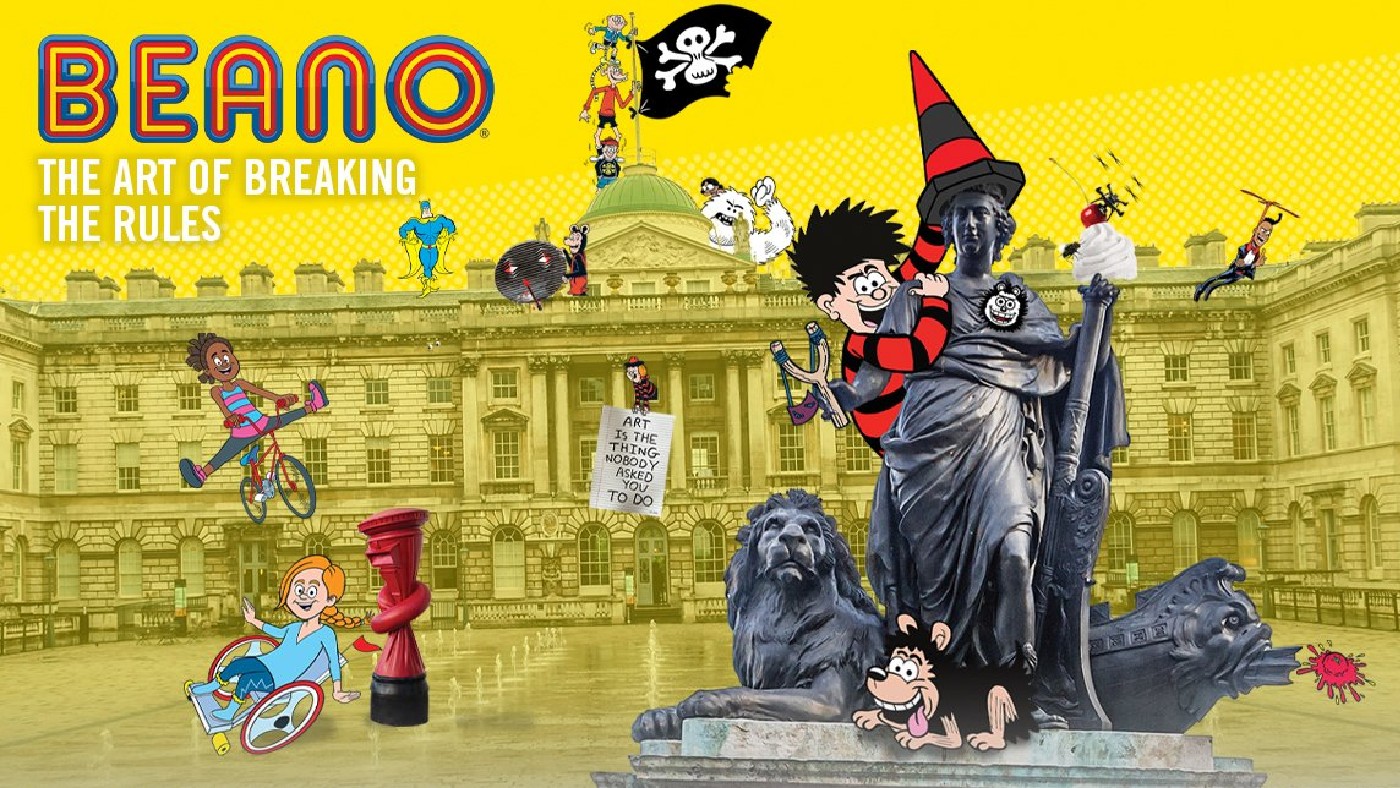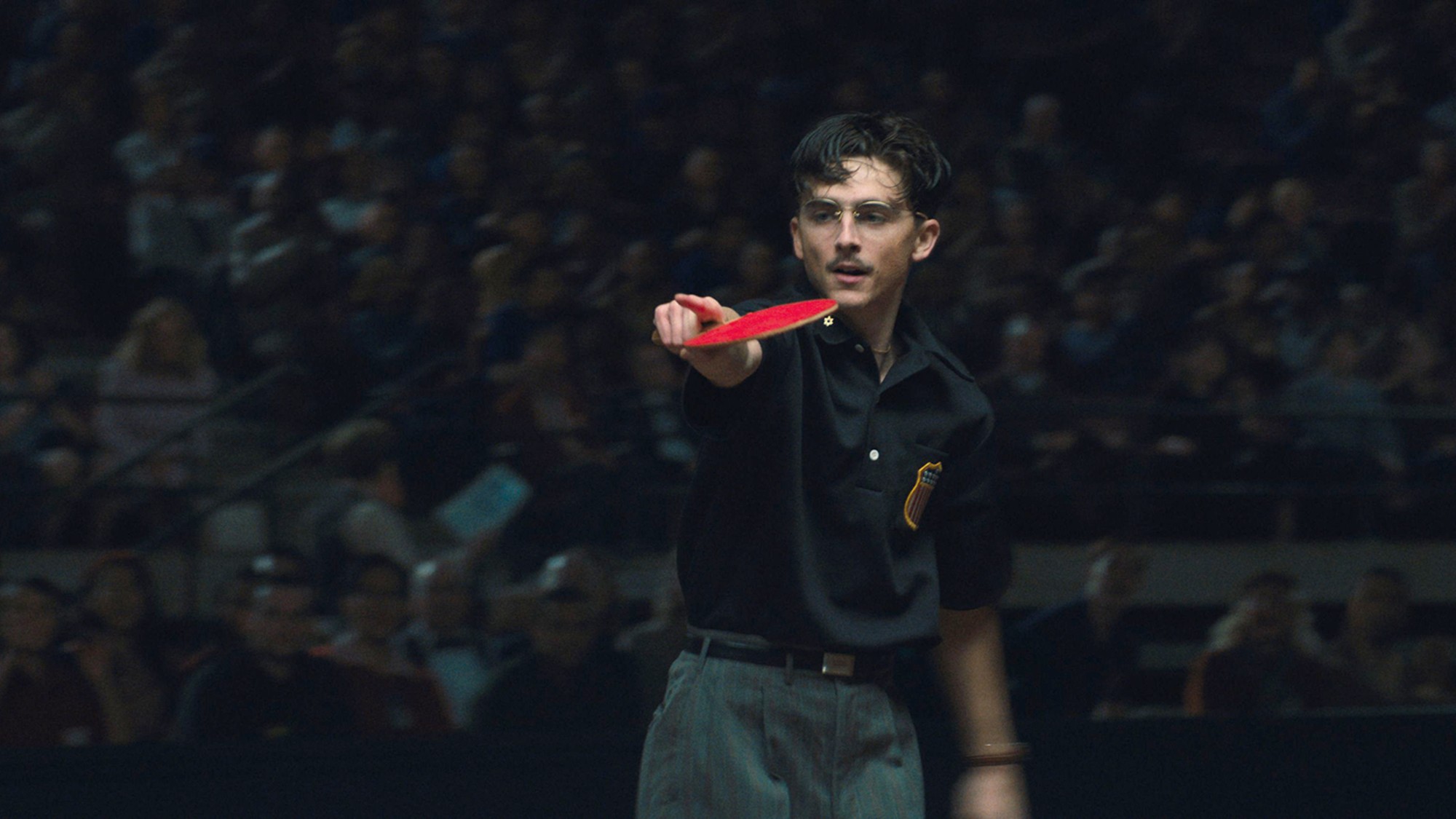Beano: The Art of Breaking the Rules – a tribute to ‘colourful, universal anti-authoritarianism’
This ‘ambitious’ Somerset House exhibition is a celebration of the comic’s ‘mercurial magic’

For 80 years, the Beano has been the nation’s pre-eminent children’s comic, said Harry de Quetteville in The Daily Telegraph. Since its launch in 1938, the much-loved title has introduced generations of children to mischievous cartoon archetypes such as Roger the Dodger, the Bash Street Kids and, of course, Dennis the Menace and his faithful dog, Gnasher.
Indeed, it seemed at times that “not a British child was without it”: at its peak in the 1950s, it shifted a “staggering” two million copies per issue–and even in today’s era of declining print sales, it still has a not-unimpressive weekly circulation of 55,000.
This “ambitious” exhibition at Somerset House is a celebration of the Beano’s “mercurial magic”, championing its cast of misfits and tracing the ways in which the comic’s “unruly escapism” has left its indelible mark on British culture. The show brings together acres of vintage cartoon strips, interactive features and contributions from Beano-loving contemporary artists including Sarah Lucas and Gilbert & George. It is a fine tribute to this “uniquely glorious exemplar” of “colourful, universal anti-authoritarianism”.
The Week
Escape your echo chamber. Get the facts behind the news, plus analysis from multiple perspectives.

Sign up for The Week's Free Newsletters
From our morning news briefing to a weekly Good News Newsletter, get the best of The Week delivered directly to your inbox.
From our morning news briefing to a weekly Good News Newsletter, get the best of The Week delivered directly to your inbox.
From Minnie the Minx to Billy Whizz, “all the favourites of our childhoods are here”, said Patrick Kidd in The Times. The comic’s universe is brought to life vividly: we are treated to a “delightful” video tour around Beanotown, presented “in the style of one of those 1950s guides to new towns such as Stevenage”, and even invited to use a computerised catapult to pelt great works of art with tomatoes. The Beano, it’s clear, always stood apart from its competitors: while most comics are about “superheroes protecting the law and upholding the rules”, this one was “about the joy of breaking them”.
As the show demonstrates, it has remained remarkably true to this formula: a strip from 1940 sees Lord Snooty tricking Adolf Hitler into dropping propaganda leaflets onto Bunkerton Castle so that he can use them to feed his pet goat; flash forward to the present day, and we find Dennis the Menace venting his frustration with Covid rules by turning his face mask into a catapult. We are also reminded that in 2018, MP Jacob Rees-Mogg “received a cease and desist letter from the Beano accusing him of impersonating Walter the Softy”; he was apparently “flattered”.

We also see how the comic has gradually evolved to reflect modern Britain over the decades, said Kasia Delgado in The i Paper. Corporal punishment – notably by means of the slipper, the traditional weapon of choice for Beano authority figures – has disappeared. New characters, including Dennis the Menace’s wheelchair-using sidekick Rubidium von Screwtop and the British Indian Chandra family, whose children have joined the Bash Street Kids, have been introduced to make its cast “more diverse”.
Elsewhere, we learn how the Beano has been a formative influence for some of Britain’s most celebrated cultural luminaries, from Wallace and Gromit creator Nick Park to Banksy; Eric Clapton was pictured reading a copy on the cover of a 1966 album, and even David Bowie was a fan, citing the comic as a cultural influence to rival Madame Bovary and The Iliad. This is a “colourful, bold and playful” show that will leave you “gripped with desire to go and actually break some rules” yourself.
A free daily email with the biggest news stories of the day – and the best features from TheWeek.com
Somerset House, London WC2 (020-7845 4600, somersethouse.org.uk). Until 6 March
-
 ‘Capitalism: A Global History’ by Sven Beckert and ‘American Canto’ by Olivia Nuzzi
‘Capitalism: A Global History’ by Sven Beckert and ‘American Canto’ by Olivia NuzziFeature A consummate history of capitalism and a memoir from the journalist who fell in love with RFK Jr.
-
 Who will the new limits on student loans affect?
Who will the new limits on student loans affect?The Explainer The Trump administration is imposing new limits for federal student loans starting on July 1, 2026
-
 Why does Susie Wiles have MAGA-land in a panic?
Why does Susie Wiles have MAGA-land in a panic?TODAY’S BIG QUESTION Trump’s all-powerful gatekeeper is at the center of a MAGA firestorm that could shift the trajectory of the administration
-
 ‘Capitalism: A Global History’ by Sven Beckert and ‘American Canto’ by Olivia Nuzzi
‘Capitalism: A Global History’ by Sven Beckert and ‘American Canto’ by Olivia NuzziFeature A consummate history of capitalism and a memoir from the journalist who fell in love with RFK Jr.
-
 Frank Gehry: the architect who made buildings flow like water
Frank Gehry: the architect who made buildings flow like waterFeature The revered building master died at the age of 96
-
 6 lovely barn homes
6 lovely barn homesFeature Featuring a New Jersey homestead on 63 acres and California property with a silo watchtower
-
 Film reviews: ‘Marty Supreme’ and ‘Is This Thing On?’
Film reviews: ‘Marty Supreme’ and ‘Is This Thing On?’Feature A born grifter chases his table tennis dreams and a dad turns to stand-up to fight off heartbreak
-
 Heavenly spectacle in the wilds of Canada
Heavenly spectacle in the wilds of CanadaThe Week Recommends ‘Mind-bending’ outpost for spotting animals – and the northern lights
-
 It Was Just an Accident: a ‘striking’ attack on the Iranian regime
It Was Just an Accident: a ‘striking’ attack on the Iranian regimeThe Week Recommends Jafar Panahi’s furious Palme d’Or-winning revenge thriller was made in secret
-
 Singin’ in the Rain: fun Christmas show is ‘pure bottled sunshine’
Singin’ in the Rain: fun Christmas show is ‘pure bottled sunshine’The Week Recommends Raz Shaw’s take on the classic musical is ‘gloriously cheering’
-
 Holbein: ‘a superb and groundbreaking biography’
Holbein: ‘a superb and groundbreaking biography’The Week Recommends Elizabeth Goldring’s ‘definitive account’ brings the German artist ‘vividly to life’